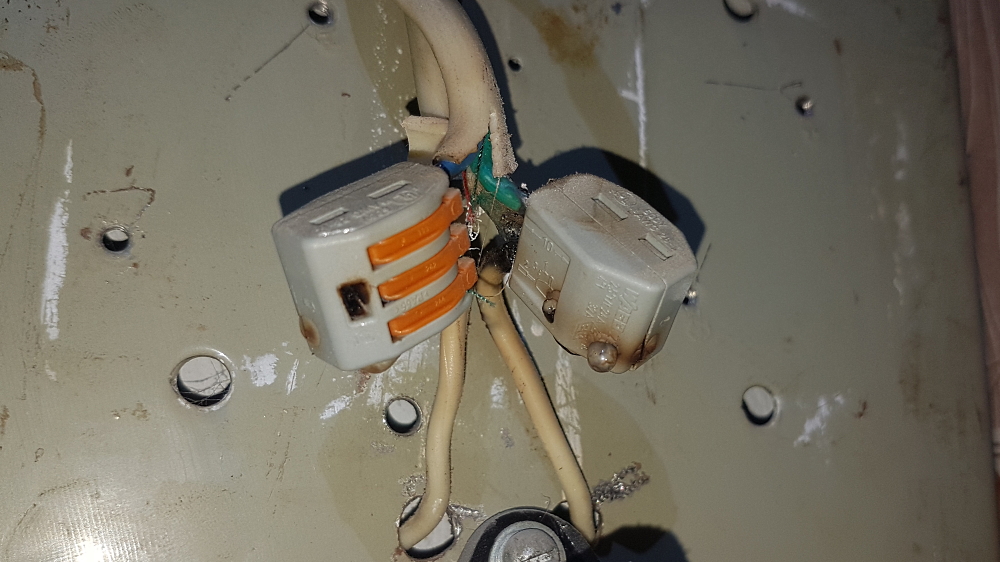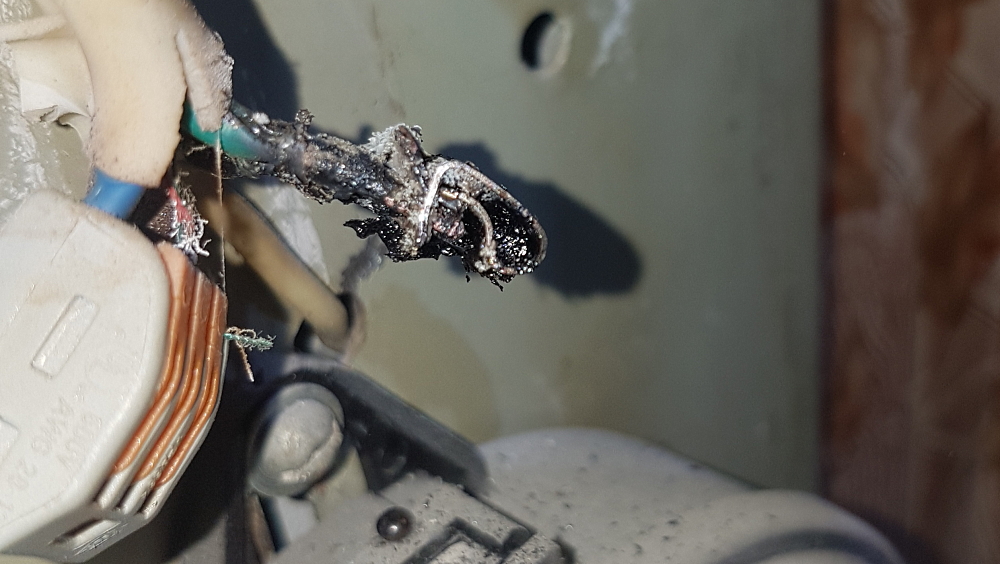
On the other hand, you can see that the white wire from the meter looks the most sad.

And, despite the seemingly decent-looking terminal blocks, inside they are no longer good for anything - the mechanism for opening the spring-loaded contact melted at the orange levers, everything melted inside, so you have to remove the terminal blocks, breaking the case with pliers.

How did it happen? On the one hand, the connection was not very pleasant - an aluminum wire left the meter, and the new wiring was copper. But it cannot be said that it was exploited in inadequate conditions. On each line there are machines for 16 amperes, and theoretically the maximum current could be 32 amperes, but in reality there were no consumers in the apartment who could fully load each line. For the first time, the smell was noticed when the washing machine and vacuum cleaner were running simultaneously, each of which has a maximum power of 2.1 kW. However, the 20A indicated on the terminal block case is 4.4 kilowatts, so there was even a small margin left for small household items. On the Internet, you can find a WAGO commercial showing work in conditions many times exceeding the standard load.
However, the reality in my case turned out to be the opposite. Even a short-term load in the area of the maximum allowable was enough for the process of gradual degradation of the terminal block with the connection and more and more intense heating to begin. You can find similar stories on the internet . Anticipating possible objections: cost, place of purchase and designations on the case make it very unlikely that they were “fake” WAGOs. I cannot refute the version of the error during the installation due to the destruction of material evidence when parsing the connection. But the practice of successful operation of terminal blocks for several years speaks against it.
I do not want to scold the WAGO 222 terminal block. It is a stylish looking and convenient device for plug connection or branching of wires. But it seems to lack a margin of safety, and, despite the 20A declared on the case, operating experience suggests that it is better to install such terminal blocks with a current margin, amperes at 10-16 maximum, and it is highly desirable to regularly check their condition. Contrary to the optimism of the post "Stop twisting", the terminal block should not be used without modifications with aluminum wires - the only material is indicated on the body - copper, and for aluminum WAGO sells a special paste separately. If you use such terminal blocks, I advise you to check their condition as soon as possible.
PS And if you wondered what I replaced the terminal blocks with, then I chose an even more powerful device that was not mentioned in the original 2012 post. Mounting clamp (nut, egg) - these are rather big plates, connected with screws, for greater reliability with fixed lock washers. One wire fits perfectly in them, because there is a special ledge in the plate design for it.

Maybe, of course, this is an overkill, but the clamps provide a detachable connection, a large contact area and look beautiful.

The disadvantages include only two points - they take up a lot of space, and for aluminum wires the screws should be checked about once a year and tightened, if necessary.